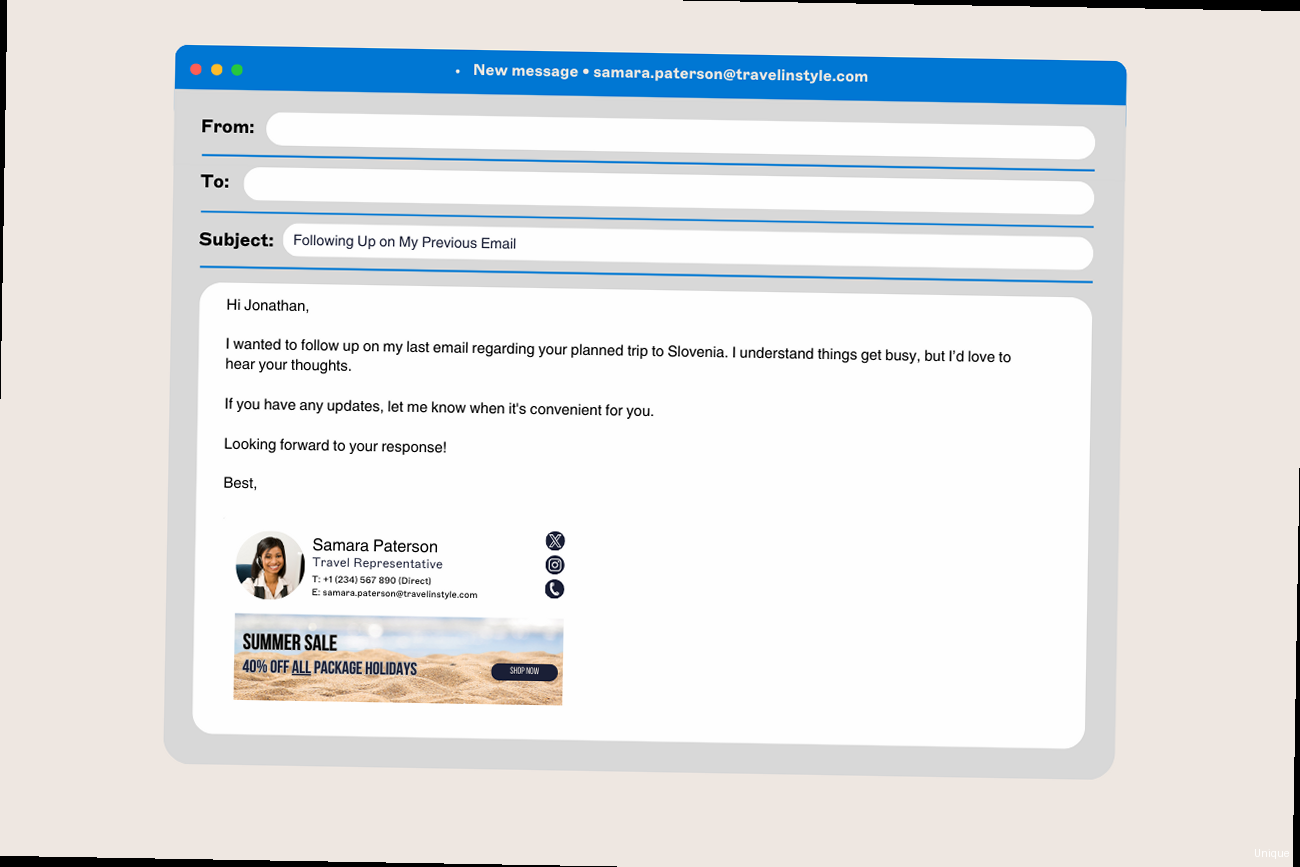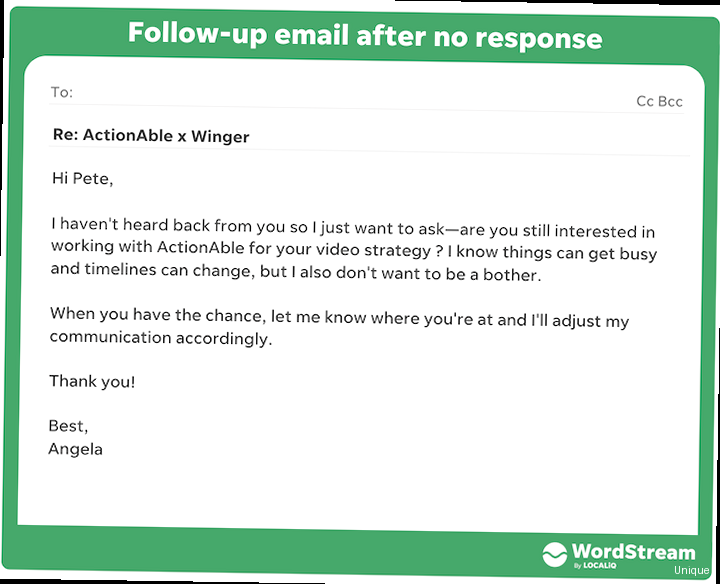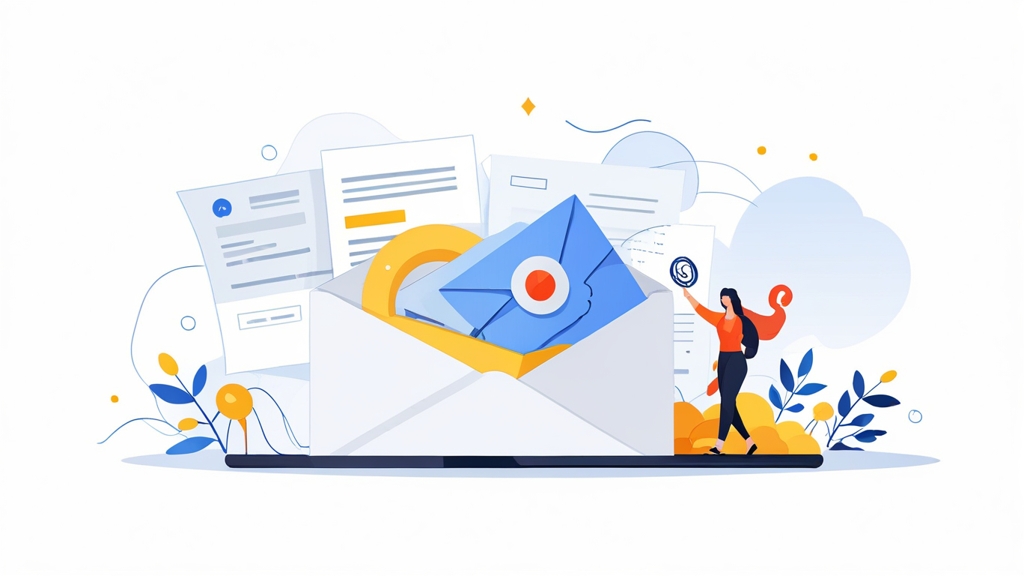Mastering the Art of the Post-Interview Follow-Up Email
Landing a job interview is a significant step, but the work doesn’t end there. A well-crafted follow-up email can solidify your impression, reiterate your interest, and provide an opportunity to address any concerns the interviewer might have. This article provides a detailed guide to writing effective post-interview follow-up emails, focusing on personalization, strategic timing, and impactful content. We’ll explore key elements, practical examples, and actionable tips to help you stand out from the competition and increase your chances of landing your dream job.
Table of Contents:
- Crafting Personalized Subject Lines and Greetings
- Expressing Gratitude and Reiterating Interest
- Highlighting Key Qualifications and Addressing Concerns
- Strategic Timing and a Clear Call to Action
Crafting Personalized Subject Lines and Greetings
 follow up email - Screenshot examples of effective and ineffective subject lines for post-interview follow-up emails." title="Illustration for Screenshot examples of effective and ineffective subject lines for post-interview follow-up emails." width="512" height="512" / class="wp-image-173 wp-image-12400">
follow up email - Screenshot examples of effective and ineffective subject lines for post-interview follow-up emails." title="Illustration for Screenshot examples of effective and ineffective subject lines for post-interview follow-up emails." width="512" height="512" / class="wp-image-173 wp-image-12400">The subject line and greeting are your first (and sometimes only) chance to grab the hiring manager’s attention. A generic subject line will likely get lost in a sea of emails, while a personalized one demonstrates that you value their time and effort. The key is to be specific, professional, and memorable. Avoid generic phrases like “Thank You” or “Following Up.” Instead, opt for something that directly references the interview or the role you’re applying for.
Subject Line Strategies:
A strong subject line should be concise (under 50 characters), relevant, and intriguing. Consider incorporating the job title, your name, or a specific topic discussed during the interview. Let’s look at some examples:
- Effective: “Follow-up: [Your Name] – [Job Title] Interview on [Date]”
- Effective: “[Job Title] – Discussed [Specific Project] – [Your Name]”
- Effective: “Thank you – [Your Name] – [Company Name] [Job Title] Interview”
- Ineffective: “Thank You”
- Ineffective: “Following Up”
- Ineffective: “Checking In”
Example 1: Highlighting a Specific Skill
Let’s say you interviewed for a Software Engineer position, and you had a detailed conversation about your experience with Python and Django. A good subject line could be: “Software Engineer Interview – Python/Django Experience – [Your Name]”. This immediately tells the recruiter the purpose of your email and highlights a key skill you discussed.
Example 2: Referencing a Company Initiative
If the interview involved a discussion about a specific company initiative or project, reference it in the subject line. For example, if you discussed the company’s upcoming expansion into a new market, you could use: “Marketing Manager Interview – Expansion Strategy Discussion – [Your Name]”.
Personalized Greetings:
Avoid generic greetings like “To Whom It May Concern.” Always address the interviewer by name. If you interviewed with multiple people, consider sending individual follow-up emails or addressing the email to the primary contact, then mentioning the other interviewers in the body of the email. If you’re unsure of the spelling of the interviewer’s name, double-check their email signature or LinkedIn profile.
- Effective: “Dear [Interviewer’s Name],”
- Effective: “Hi [Interviewer’s Name],” (Use if you established a more casual rapport)
- Ineffective: “Dear Hiring Manager,”
- Ineffective: “To Whom It May Concern,”
Example 3: Addressing Multiple Interviewers
If you interviewed with a panel, and you have the email addresses of all the interviewers, it’s ideal to send individual emails. However, if that’s not feasible, you can address the email to the lead interviewer and then mention the others. For instance: “Dear Mr. Smith, I wanted to thank you and the rest of the team (Ms. Johnson and Mr. Davis) for taking the time to speak with me yesterday.”
Example 4: Recovering from a Name Misspelling (Hypothetical)
Imagine you accidentally misspelled the interviewer’s name in your initial email. It’s best to acknowledge the mistake and apologize briefly in your follow-up. For example, if you misspelled “Jennifer” as “Jeniffer,” you could start the email with: “Dear Jennifer, Please accept my apologies for the misspelling of your name in my previous email. I appreciate you taking the time to meet with me.” This demonstrates attention to detail and ownership of your mistakes.
Expert Tip: Utilize LinkedIn to find the interviewer’s correct name and title, and to gather any background information that can help you personalize your message. Demonstrating that you’ve done your research shows initiative and genuine interest.
Expressing Gratitude and Reiterating Interest

After the personalized greeting, the next crucial step is to express your sincere gratitude for the interviewer’s time and reiterate your strong interest in the position. This is your opportunity to reinforce a positive impression and solidify your candidacy in their minds. A simple “thank you” isn’t enough; you need to convey genuine appreciation and highlight what resonated with you during the interview. Specificity is key here. Mention something you learned or a specific aspect of the job that excites you.
Conveying Sincere Gratitude:
Avoid generic expressions of gratitude. Instead, connect your thank you to something specific you discussed during the interview. This shows that you were actively listening and engaged in the conversation.
- Effective: “Thank you so much for taking the time to discuss the Marketing Manager role with me yesterday. I particularly enjoyed learning more about the upcoming social media campaign.”
- Effective: “I appreciate you sharing insights into the company’s culture and values during our conversation. I was particularly impressed by the emphasis on employee development.”
- Ineffective: “Thank you for your time.”
- Ineffective: “I appreciate the interview.”
Example 1: Connecting Gratitude to Company Culture
If the interviewer spoke about the company’s commitment to innovation or its supportive work environment, reflect that in your thank you. For example: “Thank you for sharing more about [Company Name]’s dedication to fostering a collaborative and innovative environment. I was particularly excited to hear about the opportunities for cross-functional teamwork on projects like [Specific Project].”
Example 2: Thanking for Specific Insights
Express gratitude for specific information the interviewer shared. For instance: “Thank you for providing such valuable insights into the daily responsibilities of the [Job Title] role. Understanding the emphasis on data analysis and reporting further solidified my interest in this opportunity.”
Reiterating Your Interest:
Expressing your continued interest is just as important as saying thank you. Reiterate why you’re excited about the role and how it aligns with your career goals. Be enthusiastic and specific, demonstrating that you’ve given the opportunity serious thought.
- Effective: “After learning more about the [Job Title] role and [Company Name]’s mission, I am even more enthusiastic about the opportunity to contribute my skills and experience to your team.”
- Effective: “Our conversation solidified my conviction that my skills in [Specific Skill] and [Another Specific Skill] align perfectly with the requirements of this position.”
- Ineffective: “I am still interested in the job.”
- Ineffective: “I think this job would be a good fit.”
Example 3: Highlighting Alignment with Career Goals
Connect the role to your long-term career aspirations. For example: “This opportunity to work on [Specific Project] and contribute to [Company Initiative] aligns perfectly with my long-term goal of becoming a leader in the field of [Industry]. I am confident that my skills and experience would allow me to make a significant contribution to your team.”
Example 4: Addressing Potential Concerns (Proactively)
If you sense any hesitation or doubt during the interview regarding a specific skill or experience, address it proactively in your follow-up while reiterating your interest. For instance: “While I understand that [Specific Skill] is a key requirement for this role, I am eager to learn and develop my skills in this area quickly. My experience with [Related Skill] has provided me with a strong foundation, and I am confident in my ability to become proficient in [Specific Skill] through training and on-the-job experience. I remain highly interested in the opportunity and eager to contribute to [Company Name].”
Quote: “The follow-up email is an extension of your interview, not just a polite formality. Use it to reinforce your value proposition and leave a lasting positive impression.” – Alison Green, Ask a Manager
Highlighting Key Qualifications and Addressing Concerns
This section is your chance to reinforce your key qualifications and address any concerns the interviewer might have raised. It’s not about regurgitating your resume; instead, it’s about strategically showcasing how your skills and experience directly address the needs of the role and the company. Furthermore, if any potential weaknesses or concerns were brought up during the interview, you can address them proactively and turn them into opportunities to demonstrate your willingness to learn and adapt.
Strategically Highlighting Key Qualifications:
Instead of simply listing your skills, connect them directly to the requirements of the job description and the topics discussed during the interview. Use specific examples to illustrate your capabilities and quantify your achievements whenever possible.
- Effective: “During our conversation, we discussed the need for a candidate with strong project management skills. In my previous role at [Previous Company], I successfully managed a team of five to deliver [Project Name] under budget and ahead of schedule, resulting in a 15% increase in efficiency.”
- Effective: “I was particularly interested in your emphasis on data-driven decision-making. My experience in using tools like [Specific Tool 1] and [Specific Tool 2] to analyze market trends and develop targeted marketing campaigns has consistently resulted in increased ROI.”
- Ineffective: “I am a hard worker.”
- Ineffective: “I have excellent skills.”
Example 1: Quantifying Achievements
Use numbers to demonstrate the impact of your work. For example: “In my previous role as a Sales Manager, I consistently exceeded sales targets, achieving a 20% increase in revenue year-over-year. I am confident that my experience in developing and implementing effective sales strategies would be a valuable asset to your team.”
Example 2: Connecting Skills to Company Needs
Show how your skills can directly address the company’s challenges or contribute to its goals. For instance: “I understand that [Company Name] is looking to expand its market share in the [Specific Market] sector. My experience in developing and executing successful marketing campaigns in that sector, resulting in a 30% increase in brand awareness, would allow me to make a significant contribution to your growth efforts.”
Proactively Addressing Concerns:
If the interviewer expressed any reservations about your qualifications or experience, address them directly in your follow-up email. Acknowledge their concerns and explain how you plan to overcome them or compensate for any perceived weaknesses.
- Effective: “I understand that my experience in [Specific Area] is less extensive than other candidates. However, I am a quick learner and eager to develop my skills in this area. I am currently enrolled in an online course on [Specific Skill] and am confident that I can quickly become proficient.”
- Effective: “While I may not have direct experience in [Specific Industry], my background in [Related Industry] has provided me with a strong foundation in [Relevant Skills]. I am eager to learn the nuances of the [Specific Industry] and am confident that my adaptability and transferable skills would allow me to quickly excel in this role.”
- Ineffective: “I don’t think my lack of experience in [Specific Area] is a problem.”
- Ineffective: “I can learn anything.”
Example 3: Addressing Lack of Specific Experience
If you lack experience in a specific tool or technology, highlight your willingness to learn and your experience with similar tools. For example: “While I don’t have extensive experience with [Specific Software], I am proficient in [Similar Software] and possess a strong understanding of the underlying principles. I am confident that I can quickly learn [Specific Software] through online resources and on-the-job training.”
Example 4: Addressing a Career Gap
If you have a gap in your employment history, address it honestly and explain how you used that time productively. For instance: “During my time away from the workforce, I focused on [Specific Activity, e.g., raising my children, volunteering, pursuing further education]. This allowed me to develop valuable skills in [Specific Skills, e.g., time management, leadership, communication] that I believe would be a valuable asset to this role.”
Comparison Table: Addressing Concerns vs. Ignoring Them
| Scenario | Addressing the Concern in Follow-Up | Ignoring the Concern |
|---|---|---|
| Interviewer questions lack of experience in a specific software | “While I don’t have direct experience with X software, I’m proficient in Y (similar software) and eager to learn X.” | “I’m confident I can handle the role.” |
| Interviewer expresses concern about career gap | “During my career break, I focused on skill development through X, which honed my Y skills.” | (Avoids mentioning the career gap) |
| Interviewer is unsure about cultural fit | “Our conversation confirmed my alignment with your company’s values, particularly the emphasis on Z.” | (Does not mention company culture) |
Strategic Timing and a Clear Call to Action
The timing of your follow-up email and the clarity of your call to action can significantly impact its effectiveness. Sending an email too soon might seem presumptuous, while waiting too long could make you appear less interested or cause the interviewer to forget the details of your conversation. A well-defined call to action encourages the hiring manager to take the next step, whether it’s scheduling a second interview or providing you with feedback on your application.
Optimal Timing for Sending Your Follow-Up:
The general rule of thumb is to send your follow-up email within 24-48 hours of the interview. This demonstrates promptness and keeps you top-of-mind without appearing overly eager. If the interviewer provided a specific timeframe for hearing back, adhere to that schedule. If they said they would make a decision within a week, avoid sending a follow-up email before that week has passed.
- Best Practice: Send the follow-up email within 24 hours if possible.
- Acceptable: Within 48 hours is still acceptable, especially if the interview was on a Friday.
- Avoid: Sending the email immediately after the interview (unless explicitly encouraged) or waiting longer than 48 hours.
Example 1: Handling a Weekend Interview
If your interview took place on a Friday, sending your follow-up email on Monday morning is perfectly acceptable. This allows the interviewer to start their week with your email fresh in their inbox.
Example 2: Adhering to a Specified Timeline
If the interviewer stated they would be in touch within a week, avoid sending a follow-up before that deadline. Instead, wait until the end of the week or the beginning of the following week to send your email.
Crafting a Clear and Concise Call to Action:
Your call to action should be clear, specific, and easy to execute. Avoid being overly demanding or presumptuous. Instead, focus on expressing your continued interest and offering your availability for further discussion.
- Effective: “I am eager to learn more about the next steps in the hiring process and am available for a second interview at your earliest convenience.”
- Effective: “Please let me know if you require any additional information or have any further questions. I am confident that my skills and experience would be a valuable asset to your team.”
- Ineffective: “I expect to hear back from you soon.”
- Ineffective: “When will I know if I got the job?”
Example 3: Offering Additional Information
Offer to provide additional information or references if needed. For example: “Please let me know if you require any additional information, such as references or work samples. I am happy to provide them at your convenience.”
Example 4: Expressing Flexibility and Availability
Convey your flexibility and willingness to accommodate their schedule. For instance: “I am available to discuss this opportunity further at your earliest convenience. Please let me know if there is a time that works best for you.”
Expert Tip: Proofread your follow-up email carefully before sending it. Typos, grammatical errors, and unprofessional language can create a negative impression and undermine your candidacy. Use a grammar checker or ask a friend to review your email before you hit send.
